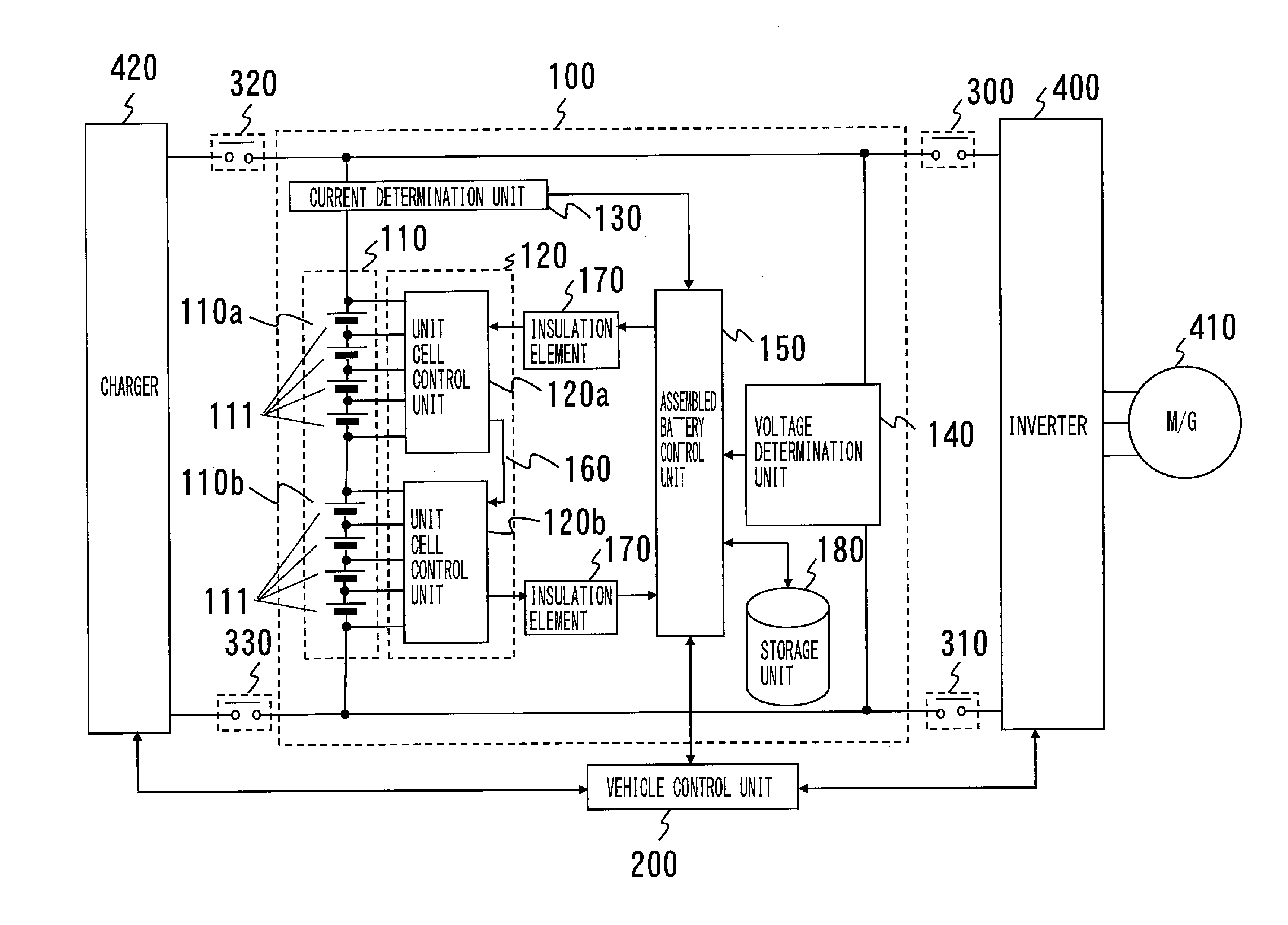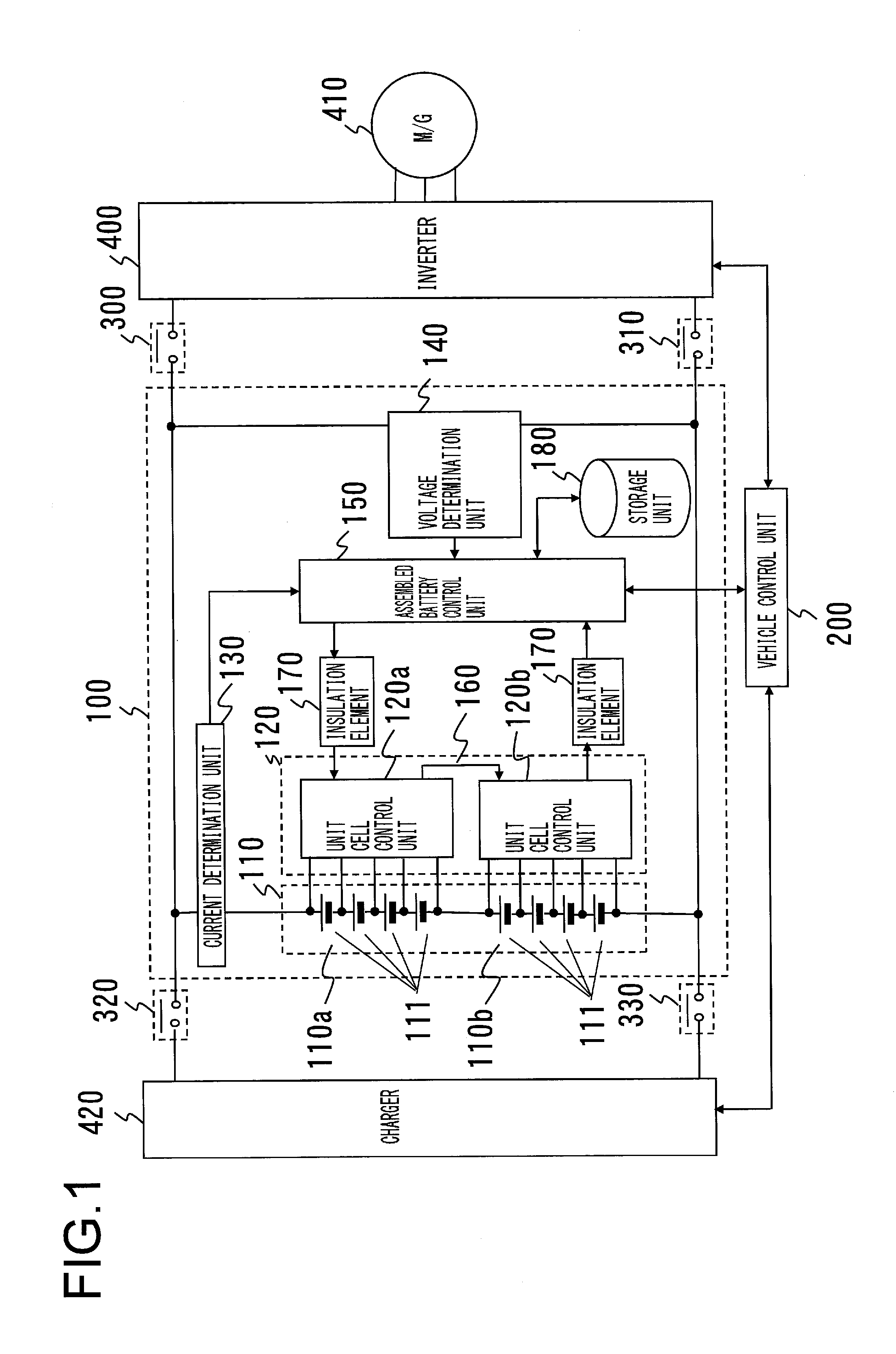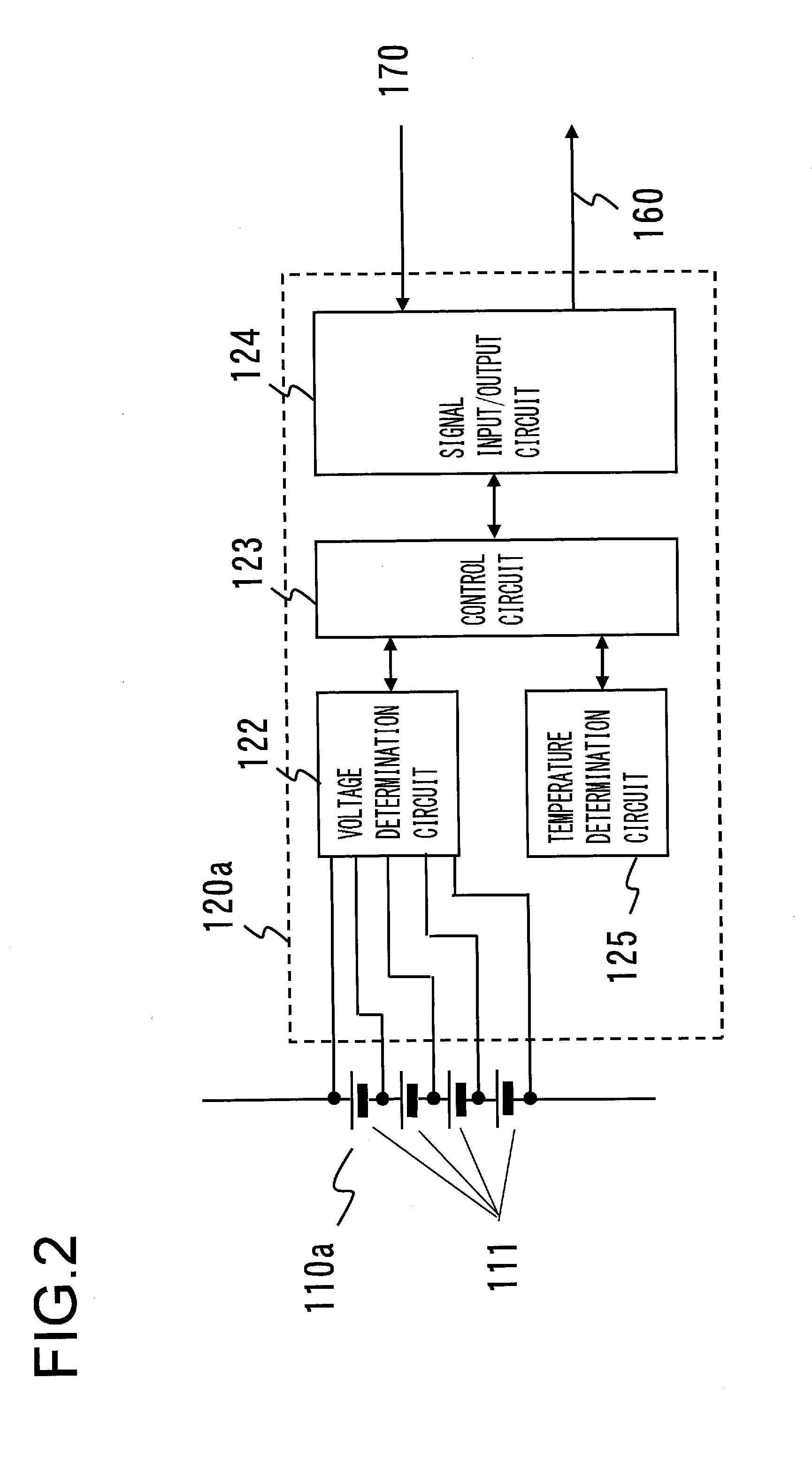Device for Assessing Extent of Degradation of Secondary Battery
a secondary battery and degradation technology, applied in battery/fuel cell control arrangement, instruments, transportation and packaging, etc., can solve the problems of difficult to estimate the ocv at that time point, and it is not possible to measure the ocv directly, so as to determine the extent of degradation of the secondary battery
- Summary
- Abstract
- Description
- Claims
- Application Information
AI Technical Summary
Benefits of technology
Problems solved by technology
Method used
Image
Examples
embodiment # 1
Embodiment #1
[0025]FIG. 1 is a block diagram showing a battery system 100 according to an embodiment of the present invention and its surrounding circuit structure. This battery system 100 is connected to a vehicle control unit 200, and the vehicle control unit 200 controls relays 300 and 310 and thereby connects the battery system 100 to an inverter 400. Moreover, the vehicle control unit 200 controls relays 320 and 330 and thereby connects the battery system 100 to a charger 420.
[0026]The battery system comprises an assembled battery 110, a unit cell control section 120, a current determination (detection) unit 130, a voltage determination (detection) unit 140, an assembled battery control unit 150, and a storage unit 180.
[0027]The assembled battery 110 is a secondary battery comprising unit cell groups 110a and 110b, with each of the unit cell groups 110a and 110b comprising a plurality of unit cells 111.
[0028]This assembled battery 110 is built by electrically connecting in seri...
embodiment # 2
Embodiment #2
[0060]Next, a second embodiment of the present invention will be explained. Since a block diagram showing the circuit structure of the battery system 100 according to this second embodiment and of its surrounding circuitry would be the same as FIG. 1 and a block diagram showing the circuit structure of the unit cell control unit 120a would be the same as FIG. 2, accordingly such block diagrams and explanation thereof are omitted.
[0061]Next, the operation according to this second embodiment of the present invention for determining the extent of degradation of a secondary battery will be explained with reference to FIG. 4.
[0062]FIG. 4 is a flow chart for this determination of the extent of degradation of a secondary battery. During propulsion of the vehicle, the processing operations shown in this flow chart are repeatedly executed by the assembled battery control unit 150 continuously or upon a predetermined cycle; and moreover, to steps that perform the same processing ...
embodiment # 3
Embodiment #3
[0068]Next, a third embodiment of the present invention will be explained. Since a block diagram showing the circuit structure of the battery system 100 according to this third embodiment and its surrounding circuitry would be the same as FIG. 1 and a block diagram showing the circuit structure of the unit cell control unit 120a would be the same as FIG. 2, accordingly such block diagrams and explanation thereof are omitted.
[0069]Now, the operation according to this third embodiment of the present invention for determining the extent of degradation of a secondary battery will be explained with reference to FIG. 5.
[0070]FIG. 5 is a flow chart for this determination of the extent of degradation of a secondary battery. During propulsion of the vehicle, the processing operations shown in this flow chart are repeatedly executed by the assembled battery control unit 150 continuously or upon a predetermined cycle; and moreover, to steps that perform the same processing operati...
PUM
 Login to View More
Login to View More Abstract
Description
Claims
Application Information
 Login to View More
Login to View More - R&D
- Intellectual Property
- Life Sciences
- Materials
- Tech Scout
- Unparalleled Data Quality
- Higher Quality Content
- 60% Fewer Hallucinations
Browse by: Latest US Patents, China's latest patents, Technical Efficacy Thesaurus, Application Domain, Technology Topic, Popular Technical Reports.
© 2025 PatSnap. All rights reserved.Legal|Privacy policy|Modern Slavery Act Transparency Statement|Sitemap|About US| Contact US: help@patsnap.com



